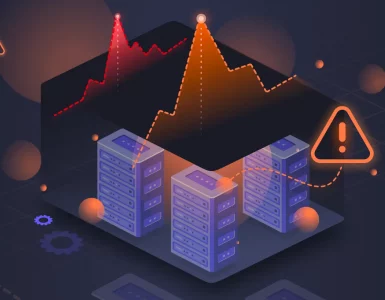With software permeating enterprises, delivering features faster grew imperative for competitiveness. Although DevOps improved application release velocity through automation, manual database change processes remained – creating bottlenecks arresting end-to-end agility and innovation.
This article by Talent500 experts explores modern database DevOps techniques helping leaders accelerate cycles by seamlessly integrating data workflows alongside application code. Advancements in enabling technologies coupled with communication and culture shifts promise tremendous reliability and productivity improvements, unlocking immense latent value.
Let’s explore:
Core Database DevOps Capabilities
Transforming rigid legacy database management requires a holistic focus optimizing people, processes and tools in unison. Essential high-level capabilities overcoming friction and bottlenecks include:
Consolidated Teams
Siloed database and application groups commonly misaligned priorities despite shared goals. Converge fragmented teams into integrated units managing infrastructure, applications and data changes jointly. Break down knowledge siloes through collaboration and transparency.
Unified Processes
Inconsistent procedures needlessly inject defects. Standardize version control, CI/CD, testing and monitoring uniformly for application code, configurations and database changes. Celebrate successes collectively while instilling individual accountability.
Incremental Changes
Big bang database updates heighten risk of unintended side effects. Require small, iterative changes instead, easing isolation and testing. Maintain changelogs with cumulative effect histories to simplify tracking incrementally over time.
Production-Like Testing
Prototype real-world conditions early using masked but accurate data at scale to validate changes pre-deployment. Mock complexity across hardware and software elements for maximally realistic test results without risking exposures.
Deployment Automation

(Credits)
Manual steps stall velocity while enabling variability in outcomes. Script environment provisioning, verification, data migration and upgrades for reliability. Embed database changes seamlessly alongside application code workflows.
Configurable Rollbacks
Despite extensive precautions, some defects will remain unavoidable. Quickly revert database changes independently while retaining complementary application updates with minimal business disruption. Maintain independent version histories to simplify isolating and restoring known good states.
Holistic Observability
Instrument processes end-to-end for maximal visibility informing proactive evidence-based decisions by default. Assess deployments via automated validation scripts. Ingest high-resolution telemetry revealing performance, errors, outages and usage patterns.
Now let’s explore leading techniques and tooling considerations to actualize these ideals.
Treat Database Code as First-Class Citizens

(Credits)
Managing database code via identical tools as application code eliminates procedural siloes. Version together. Test together. Release together:
Consolidated Source Control
Store all artifacts – apps, databases, configs – within unified systems like Git from inception. Maintain integrated changelogs with fully aligned, granular code histories across layers.
Native CI/CD Inclusion
Embed incremental database changes natively within CI/CD pipelines alongside applications always. Jointly automate policy enforcement, testing, reporting and approvals early and often. Reject unreliable changes pre-deployment.
Integrated Artifact Management
Compile trusted code into immutable application and database build artifacts representing coherent versions across layers. Handle releases holistically by promoting unified, aligned bundles across environments instead of piecemeal.
This “shift left” product management philosophy seamlessly integrates data earlier while readily accommodating modern software delivery platforms. Core Agile and DevOps practices adapt fluidly across underlying infrastructure.
Implement Rigorous Testing Controls
While database changes bring unique testing considerations, tailored techniques help technology leaders enhance validation guardrails:
Automated Functional Testing
Assess application functionality alongside database changes pre-deployment via parameterized, scripted tests leveraging sample yet realistic data sets. Fail fast, often, and early.
Infrastructure Simulation Testing
Profile target systems then mock configuration complexity during testing to uncover scaling, upgrade or transition issues earlier. Confirm future infrastructure readiness via dry runs.
Automated Deployment Validation
Post deployment, systematically confirm outcomes match expectations around functionality, data integrity, performance and security. Inject representative data sets and queries asserting key metrics automatically.
By investing in rigorous test infrastructure and frameworks, leaders accelerate issue detection while assuring resilient releases. Purpose-built database DevOps tooling radically simplifies constructing contextual validations tailored to complex environments.
But efficiently testing changes requires safely mimicking sensitive production data at scale. Modern data provisioning platforms securely synthesize masked derivatives usable anywhere by virtually reproducing source characteristics.
With access to accurate pre-deployment test data, integrated application and database changes probably operate cleanly before promotion to production. For technology executives assessing 2024 database DevOps capabilities, realistic data remains an obligatory cornerstone.
Instrument End-To-End for Maximal Observability
Legacy release practices rely predominantly on downstream production monitoring to confirm satisfactory change operations post-deployment. Modern database DevOps instead mandates end-to-end instrumentation for full-spectrum observability informing proactive data-driven decisions by default.
Concrete techniques include:
Database Migration Instrumentation
Track all database migration executions extensively alongside respective runtime parameters, environment details, timestamps, approvals and outcomes. Visualize changelogs detailing incremental updates applied over environments.
Deployment Validation Telemetry
Post deployment, scripted checks automatically validate outcomes against expectations around functionality, data integrity, performance and security. Notify teams immediately of any deviations or failures.
Proactive Performance Alerting
Ingest high-resolution time-series monitoring streams into data lakes to trigger alerts predictive of emerging problems before customers ever notice. Configure context-aware notifications for deployment pipeline events.
By holistically instrumenting processes, infrastructure and code at critical control points, technology leaders gain objective rapid troubleshooting capabilities. Purpose-built database DevOps tooling further simplifies generating, visualizing and reacting to observability data at scale.
Architect Resilient Systems Supporting Instant Rollbacks
Despite extensive precautions, some defects inevitably escape detection. Both application and database changes may carry unanticipated downstream impacts only visible post-production. But database failures prove especially problematic given statefulness and interconnected dependencies.
Database DevOps requires planning failure response protocols proactively. Techniques to limit damage duration and magnitude include:
Evaluate Risk Scenarios
Thoroughly weigh potential business disruption severity against issue probability for different classes of changes. Balance business impact analysis with technical recovery trade-offs.
Automate Efficient Rollback Workflows
Beyond just reversion capabilities, prepare executable runbooks to swiftly restore full-stack environment stability. Consider likely failure modes and efficiently codify restoration protocols ready for one-click activation.
Independent Version Histories
Independently version and track database migrations alongside respective runtime metadata. Simplify cleanly isolating and surgically reverting bad changes irrespective of hosting infrastructure conditions or complexity.
By assessing risks upfront while automating remediation workflows, technology leaders architect resilient systems rapidly minimizing business disruption when unforeseen downstream defects inevitably emerge. This complements enhancing overall release quality via earlier validation controls across staging environments.
Refine Roles: Scale Specialists Strategically
A primary historical DevOps adoption barrier stems from DBAs reasonably fearing job losses from increased automation. However, thoughtfully standardizing and scaling processes instead liberates talent towards more rewarding design and governance duties – not rote manual tasks.
Rather than reducing specialized roles, redefine responsibilities strategically balancing intensifying business needs:
Embed Database Expertise Across Teams
Proactively distribute bottlenecks by training all engineers on basic data management, instilling shared ownership for app feature design suitability alongside underlying database capabilities.
Retain Strategic Data Architects
Preserve versatile senior DBAs focused on high-value future-proof data management vision, compliance sustenance and performance tuning decision making. Refocus unique experience on enablement over repetitive tasks.
Expand Holistic SRE Scope
Grow site reliability engineering teams orchestrating complex deployments while rigorously governing integrated production release processes. Ensure coordinated operational integrity and resilience while proactively pinpointing instability risks.
Leaders should thoughtfully scale up specialists to enrich applications with strong data management foundations for intensifying functionality demands. Doing so also demonstrably bolsters security, oversight and governance capabilities scaling to meet soaring data leverage expectations across enterprises.
Implement Granular Access Controls
As business logic concentrates within applications, unchecked data access risks dangerous overexposures. However, modern data platforms readily support precise control policies balancing security against productivity:
Attribute-Level Masking
Dynamically redact sensitive elements like salaries or health records when querying. Expose only minimum required non-restricted attributes per role.
Row Filtering
Restrict data visibility to mandatory subsets using parameterization. Selectively mask columns to prevent unintended access outside app-required attributes.
Just-In-Time Provisioning
Require short-lived temporary credentials for executing approved changes. Revoke permissions immediately post-deployment rather than enabling persistently high-risk user access.
As technology executives analyze 2024 database DevOps capabilities, granular data controls provide essential protection while empowering developers through orchestration to meet velocity demands. Audit logging creates downstream accountability.
Closing Recommendations
Manual database management processes severely constrain business innovation velocity as software permeates operations. However, techniques now exist accelerating DevOps productivity by tackling data bottlenecks head-on.
By unifying teams, tools and procedures managing infrastructure as code across layers, technology leaders directly embed data flows alongside applications within streamlined pipelines. Pragmatic adoption of automated capabilities coupled with cultural and communication transformations catalyzes exponential outcomes.
Veteran-validated deployment and rollback architectural guardrails also systematically eliminate lingering downstream impediments, risks and waste organizationally. As macroeconomic uncertainty intensifies amid disruption, optimizing development leverage and data asset responsiveness grows increasingly imperative.
Forward-looking executives will allocate urgent attention and investment to database DevOps improvements unlocking immense latent value from existing infrastructure. Measure incremental progress empirically against risk-adjusted outcomes while celebrating milestones cross-functionally, reiterating interdependence and shared purpose.
Through courageous leadership commitment to transparency, communication and pragmatic innovation adoption, technology executives can deliver differentiating business impacts by systematically lifting database constraints undermining application potential and overall organizational data leverage.
Looking for a remote DevOps job at a Fortune500 organization? Sign up on Talent500 to find your dream job now!






Add comment